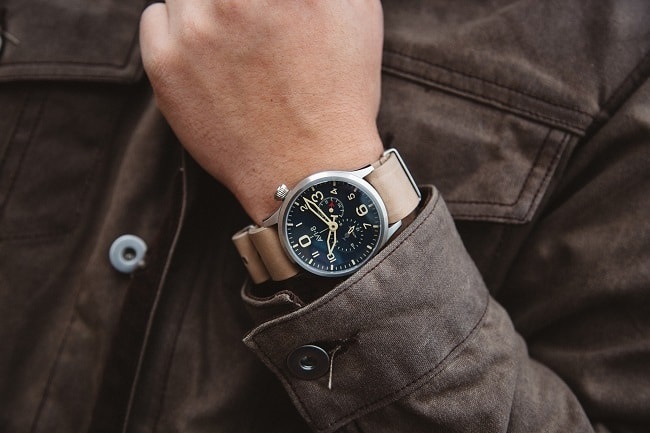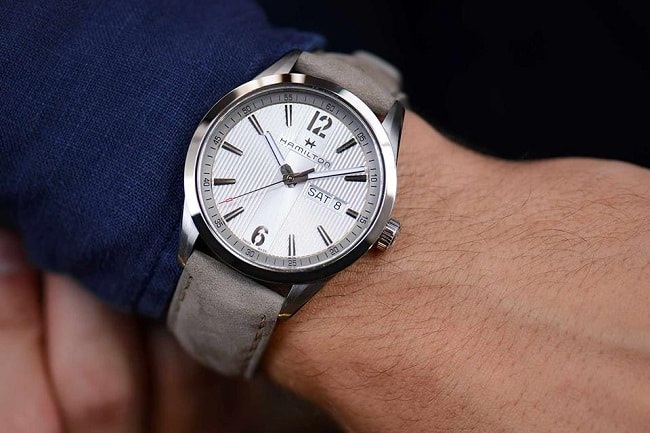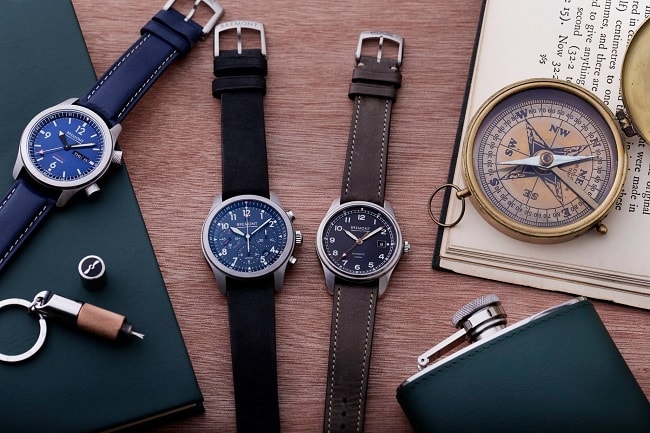1
HOME > Tips & Advice >
HOW TO STYLE A WATCH WITH YOUR OUTFIT
IMPORTANT TIMEPIECE STYLING RULES YOU SHOULDN'T IGNORE
Written by Dan Skinner in Tips & Advice on the 30th November 2017

It’s 2017, there’s no need for a watch in this day and age but somehow, it’s still a necessary item for nearly every man and a watch can be the essence of your outfit. I know if I leave my house without mine I feel naked, my wrist is bare and I have to take my phone out of my pocket to check the time. I feel as though my professional attire is irrelevant for that day, but most importantly, I don’t get that amazing feeling of uncoupling the strap at night. Men with style will understand that a watch plays more than a convenience role of what its designed to do. They’ll also tell you that you can never have too many watches, though there will be a favourite, you can never have enough. A plethora of watches is never a bad thing. Your average Joe will know not to wear a sports watch with a black tie, but what they are really wanting to know is how to match it with their clothing.
The first step is to try match the formality of the watch with the formality of the outfit. The more formal the event the simpler the design should be. Watches can provide a delicate touch of class to your already suave attire if worn correctly, such as a black-tie event. We suggest going with an Analog watch with a thin, plain and simple design on the face that incorporates hours, minutes and seconds. No bold, outlandish colours, a modest black or white will do.

As we move further down the spectrum we arrive at business/dress casual. Here you can start to experiment with diver’s watches, pilot watches and even smart watches (I don’t care if people say that “smart watches are not really watches”, it’s a changing of the times bringing a classic piece into the modern era). For conservative dress code, many watches can complement the attire. Simple, thin, dark toned watches come into play again, however for a bolder statement, divers watches are allowed with the likes of Rolex, Bremont and Audemars piguet to name a few. Pilot watches tend to contain the thicker face found on divers watches but maintain the leather strap of a more formal approach. This kind of design can be seen in brands like IWC, AVI-8 and Hamilton. Usually on the cheaper side but still an impact watch non-the-less. Even smart watches (when worn correctly) can make an appearance in the office as interchangeable bands are a huge selling point.

Smart/casual and sporting attire will require you to leave your dress watch behind - essentially you have free reign, as metal bands can mix and match well with jackets, jeans and sneakers - meanwhile leather is suitable for any outfit. Furthermore, digital watches come into their own. Easy to read, easily repaired, long lasting, cheaper, alarm functions, GPS, pulse monitors... the list goes on. However, those benefits also manifest themselves into the stigma that digital watches are not for work, but hey, wear them all you want on the weekends or during holidays. Step two is to simply wear a material match. What I mean by this is leather works with leather and rubber works with rubber. For a formal look, your leather colours should all be coordinated with matching shoes, belt and watch strap in the same shade. There is arguably nothing ghastlier than a non-colour coding suit, it shows a lack of effort and screams unprofessionalism. Brown leather shoes are to match the same tone as your brown leather belt and they are both to match your watch strap. Personally, I think this combo looks great with navy-blue or light grey attire, whilst black leather is suitable for black and dark grey, even burgundy if accessorised properly. Rubber watch straps fit perfectly with sneakers and sporting attire, whilst benefiting from not needing to be as colour co-ordinated as leather, simple lighter and darker shades when picking outfits will do the trick. Further emphasising the fact that you can never have too many watches.

Step three is to match metals and to also match your body type. There’s no point trying to pull off a Rolex Submariner if you have wrists the width of a Hula Hoop, the only thing you’ll achieve is looking like you belong on the borrowers. The same can be said for big guys, wearing a small watch but having arms the size of logs defeats the object of wearing a watch as it practically becomes invisible. Corresponding metals is key, you’ve worked hard in order to style your accessories around your suit, so why should your favourite chain, rings or cufflinks let you down? For instance, the metal frame around your watch should match your styling ring, wristwear or belt buckle. Similar guidelines exist for metal watch straps too. On the contrary, the only exception to the rule can be wedding bands, as its very rare you’ll ever take it off when dressed up (unless that’s your thing). Additional accessories are up to you to mix and match till you find that complete look, with tie bars, necklaces and tie clips all being great metal jewellery options to play around with - the combinations are endless.

The only dilemma now is to understand what metal matches you the best? Easy, silver goes well with cool skin tones and gold with warmer skin tones. In order to find out which tone you are, look at your wrist or hand and if you can see the blueness of your veins you're cool and if you're more purple/deep blue you’re a warmer tone.
Trending
2
3
4
5
6
7
8
9
10








